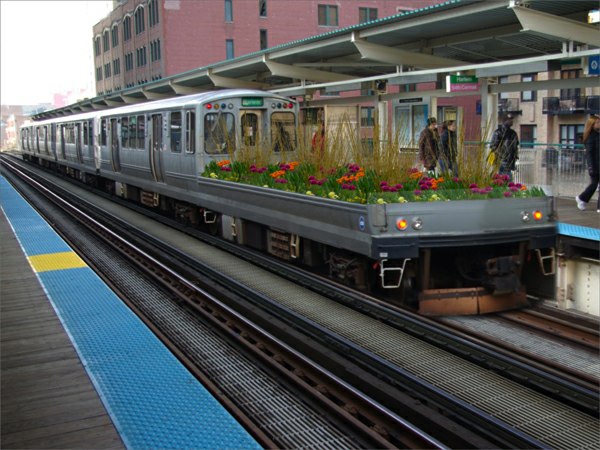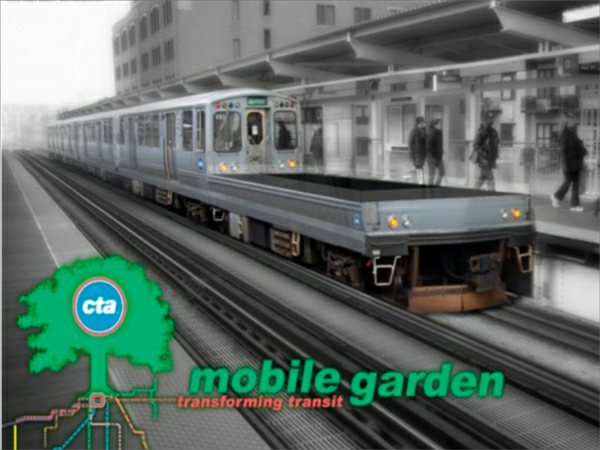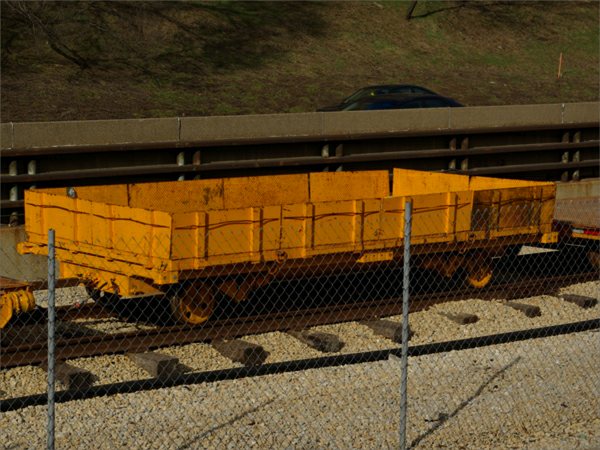Interview: Joe Baldwin And The Mobile Garden Project
By Ben Schuman Stoler in Arts & Entertainment on May 12, 2010 5:40PM
Walking around the NEXT show a few weekends back, we wanted to meet the new guard of artists and art movers in Chicago. We wanted to see what galleries were just starting, why they were just starting, and how they were going about it. We wanted to meet the artists still in school, just out of school, or selling their first work.
Robert Bills of the eponymous gallery is a good example. His gallery is so new it's still under construction. In this two part feature, we have interviews and photos with Bills and Joe Baldwin, one of the artists he is representing.
Baldwin is an MFA student at UIC, but he's already getting considerable attention for his work in new media. Some of Baldwin's photographs were on display at NEXT, but it was his mobile garden project that caught our eye. You can see the photos above for Baldwin's projection of how it will look (though it will probably end up enclosed, like a mobile greenhouse).
We sat down with Baldwin to discuss his work, his relationship with the gallery, and how the mobile garden is moving forward.
Chicagoist: So what’s the update with the mobile garden?
Joe Baldwin: CTA’s approved with conditions.
C: For when?
JB: We’d like to launch it next spring. We have to get it paid for, insured (as part of the budget), and indemnified for legal risk. It's not a CTA project nor is any part of it being paid for by the CTA - that's typically the first misinformation to come up or be misread. The budget is close to $200,000 but I’m in Chicago so I’m doubling that. I know things will go over and I’d rather plan for it than have to wait another year. Our fundraising goal is closer to $400,000.
C: What got you interested in this project to begin with?
JB: I always studied the arts, always had an interest in nature.
C: But you see this project primarily as art, as an art project.
JB: Yeah, yeah I do. I consider it an art installation. One of the first ideas of what to do for this project was transportation and art - what kind of gesture could stop traffic that could be sort of non-commercial? So I reflected back to these railroad crossings by where I grew up - you’re waiting 10-20 minutes for a train to pass. Watching these cars go by, freight go by, all these things that were able to stop traffic, I thought it would be nice to see a garden stop traffic. So I pictured a garden traveling across states as part of freight - but for art’s sake. Then I started thinking what is responsible to use as material and I started thinking about native plants. So native plants will be the material on the garden. And then I thought I should use a closed system like the CTA because then I’m not spreading native plants to other areas outside of the native area. It’s two circles that overlap: native plants and CTA track. Both are closed systems.
C: How does the mobile garden fit into your work in new media?
JB: I consider myself a new media artist - I can make conceptual work without making anything new or technological.
C: What’s your role at the Robert Bills gallery? Will you stick with the gallery beyond this project?
JB: He just represented me in this NEXT show and we’re close as far as the art/dealer relationship. I’m happy with continuing to be represented by him and my work is at his gallery. What was at the NEXT show primarily were my photographs, but Bob wanted to give me a chance to show the mobile garden in front of so many people.
C: It was definitely the attention grabber.
JB: Yeah it was a win/win.
C: So what’s next?
JB: My next step is to get face time with companies and foundations and institutes to get the leverage to start getting the funds together, to work on a main corporate sponsor. I’m working with Pivotal Productions for a side event for the project I want to do called Take A Plant to Work Day. We’re gonna try to get a local grower to donate 10,000 plants and on the outer stops of the L and on the Metra, maybe even out in the suburbs, pass out a couple hundred plants per stop and then find a vacant space downtown close to a main exit point. People can leave the plants there or take them home or whatever. Some of the parts are still in the air but that’s one of the projects that will fold back into the campaign to get people interested in supporting the mobile garden. It’s experiential marketing. The point is to get people on board with the idea. Because tons of people love the idea but it’s one of those bipolar issues with art and nature: people love it but nobody supports it.



